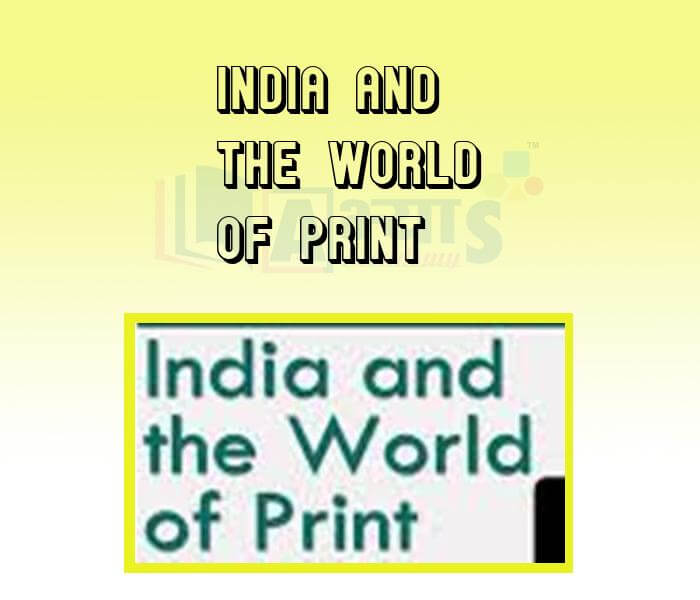India and the world of print










India and the world of print
India and the World of Print: Before the age of print, ideas and information were in written form.
Manuscripts before the Age of Print: India had a very rich and ancient tradition of hand written manuscripts in Sanskrit, Arabic and Persian as well as in various Vernacular languages. These manuscripts were copied on palm leaves or on handmade paper. Manuscripts were highly expensive and got damage easily. They had to be handled carefully and were not widely used in everyday life.Manuscripts continued to be produced till well after the introduction of print , down to the late nineteenth century . The pre-colonial Bengal had developed an extensive network of village primary schools. Here, many students did not read texts because teachers dictated texts from their memory and students wrote them down. Many students thus became literate without reading any kinds of texts.
Print Comes to India: The first printing press came to Goa with the Portuguese missionaries in the mid—16th century. Jesuit priests learnt Konkani and printed several books. About 50 books had been printed in Konkani and Kanara languages in 1674. Catholic priests printed the first Tamil book in 1579 in Cochin and in 1713, the first Malayalam book was printed. In 1710, Dutch Protestant missionaries had printed 32 Tamil books.English language press didn't grow in india till quite late even though the english East India Company began to import presses from the late seventeenth century .
Vernacular Language :- The Languages spoken in a particular area or by a particular group especially one that is not the official or written language .
Diwan - Hafiz was a 14th century poet whose collected works are known as Diwan Manuscripts lie this continued to be produced for the rich even after the coming of the letterpress.
Students / Parents Reviews [10]
I have spent a wonderful time in Abhyas academy. It has made my reasoning more apt, English more stronger and Maths an interesting subject for me. It has given me a habbit of self studying

Yatharthi Sharma
10thA marvelous experience with Abhyas. I am glad to share that my ward has achieved more than enough at the Ambala ABHYAS centre. Years have passed on and more and more he has gained. May the centre flourish and develop day by day by the grace of God.

Archit Segal
7thMy experience was very good with Abhyas academy. I am studying here from 6th class and I am satisfied by its results in my life. I improved a lot here ahead of school syllabus.

Ayan Ghosh
8thOne of the best institutes to develope a child interest in studies.Provides SST and English knowledge also unlike other institutes. Teachers are co operative and friendly online tests andPPT develope practical knowledge also.

Aman Kumar Shrivastava
10thAbout Abhyas metholodology the teachers are very nice and hardworking toward students.The Centre Head Mrs Anu Sethi is also a brilliant teacher.Abhyas has taught me how to overcome problems and has always taken my doubts and suppoeted me.

Shreya Shrivastava
8thMy experience with Abhyas academy is very good. I did not think that my every subject coming here will be so strong. The main thing is that the online tests had made me learn here more things.

Hiya Gupta
8thAbhyas Methodology is very good. It is based on according to student and each child manages accordingly to its properly. Methodology has improved the abilities of students to shine them in future.

Manish Kumar
10thIt was good as the experience because as we had come here we had been improved in a such envirnment created here.Extra is taught which is beneficial for future.

Eshan Arora
8thIt was a good experience with Abhyas Academy. I even faced problems in starting but slowly and steadily overcomed. Especially reasoning classes helped me a lot.

Cheshta
10thBeing a parent, I saw my daughter improvement in her studies by seeing a good result in all day to day compititive exam TMO, NSO, IEO etc and as well as studies. I have got a fruitful result from my daughter.
